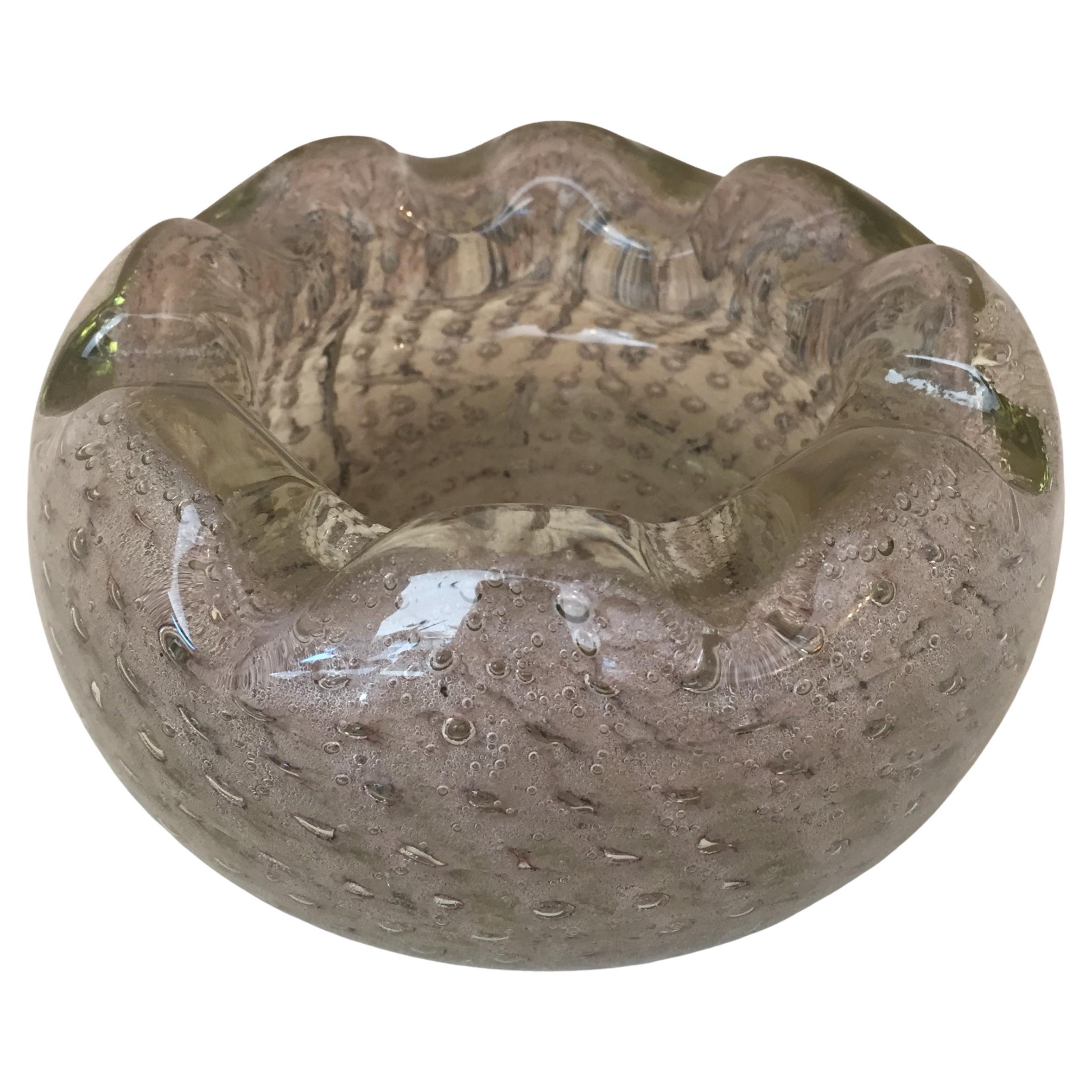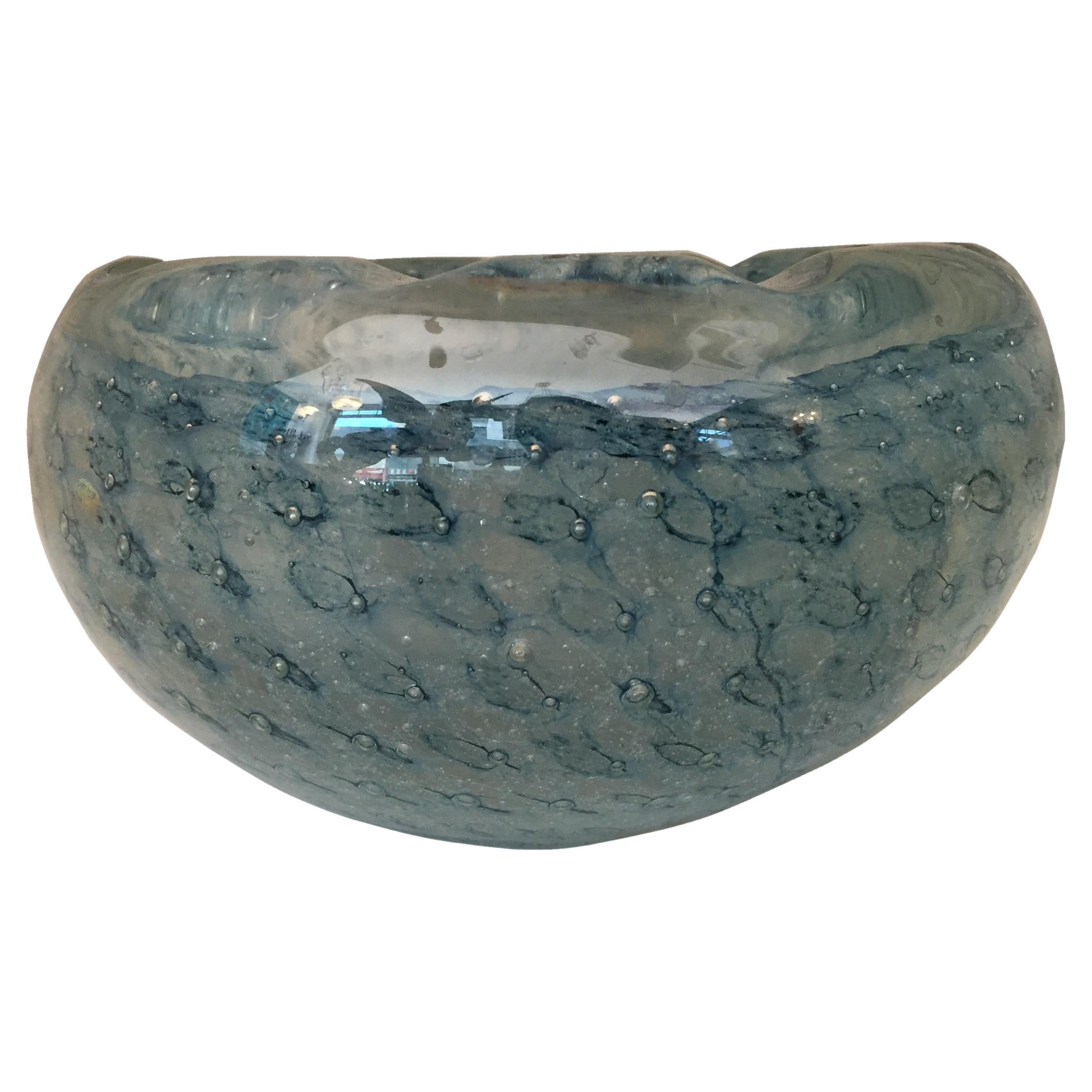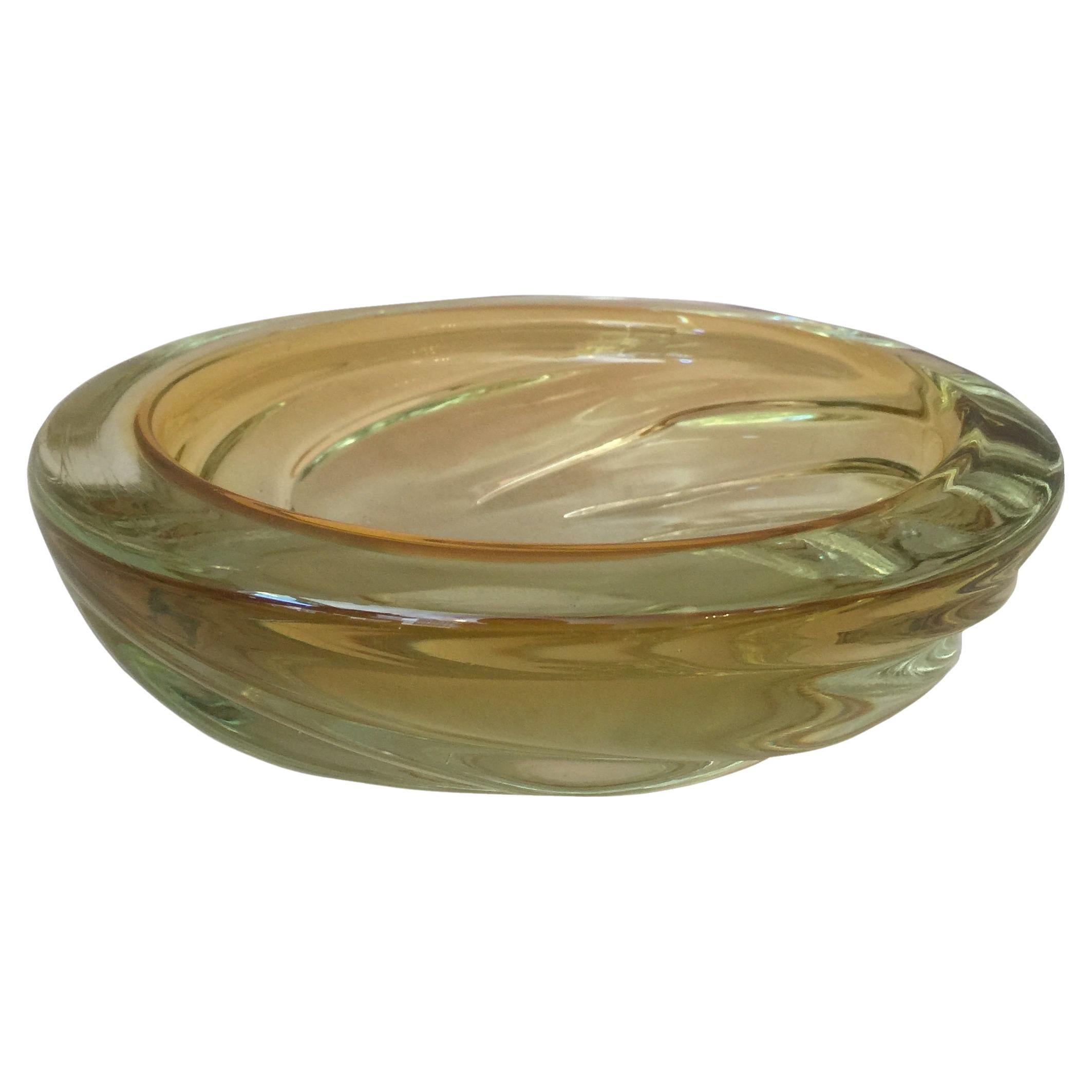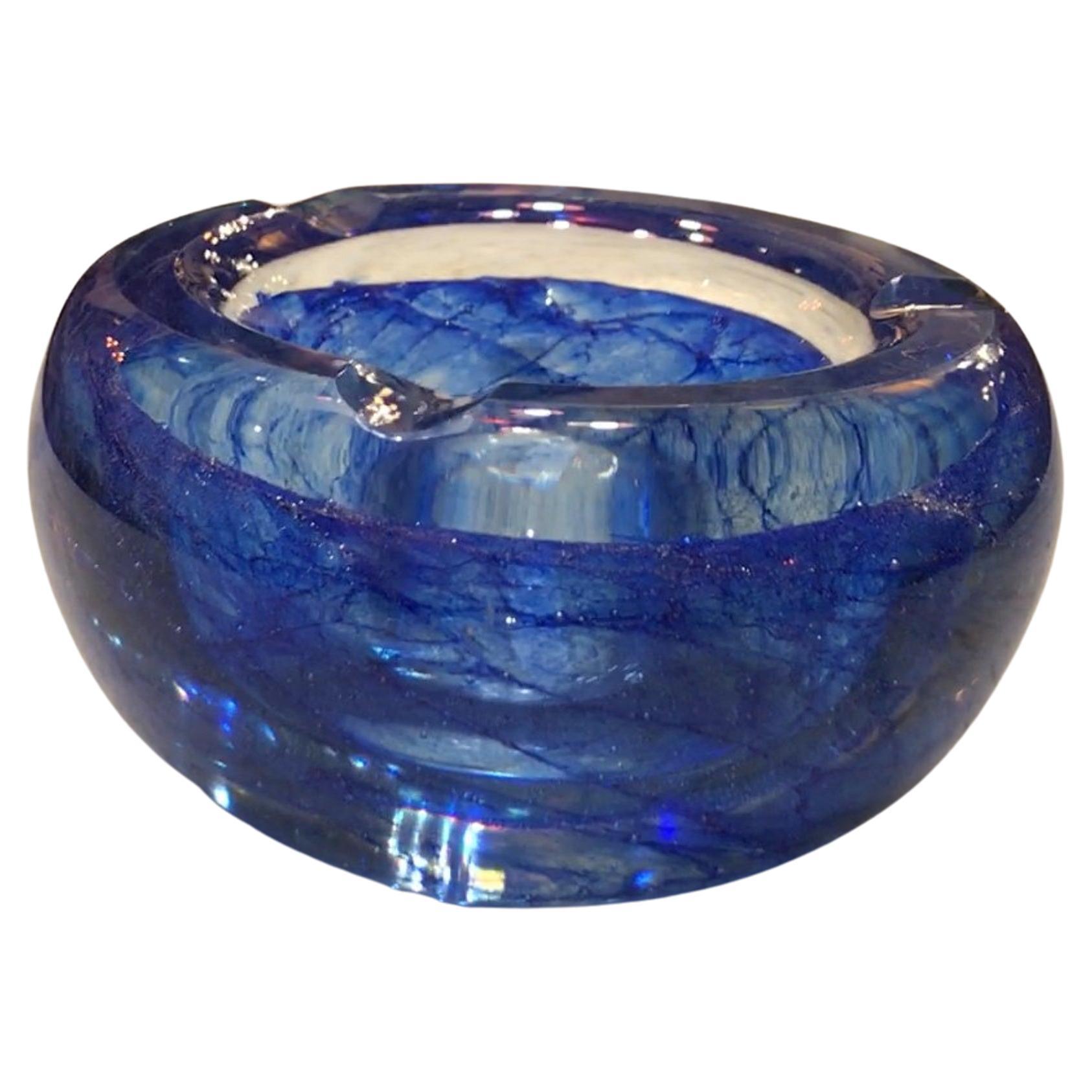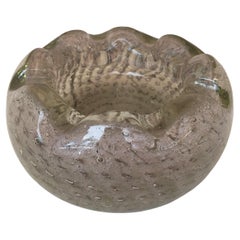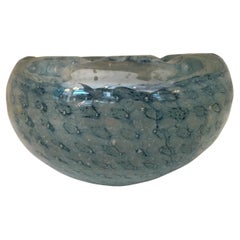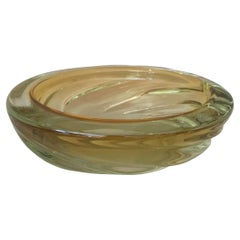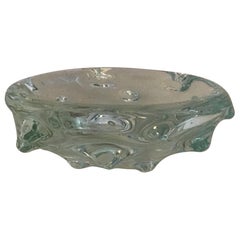Items Similar to Murano, 1930, Attributed to Paolo Venini Technique Pelegoso, italy
Video Loading
Want more images or videos?
Request additional images or videos from the seller
1 of 22
Murano, 1930, Attributed to Paolo Venini Technique Pelegoso, italy
$7,000
£5,228.66
€6,061.80
CA$9,719.33
A$10,894.11
CHF 5,672.24
MX$133,021.77
NOK 72,016.90
SEK 68,265.54
DKK 45,227.62
Shipping
Retrieving quote...The 1stDibs Promise:
Authenticity Guarantee,
Money-Back Guarantee,
24-Hour Cancellation
About the Item
Murano
We have specialized in the sale of Art Deco and Art Nouveau and Vintage styles since 1982. If you have any questions we are at your disposal.
Pushing the button that reads 'View All From Seller'. And you can see more objects to the style for sale.
Venini ( Technique Pelegoso )
Pelegoso technique A type of glass characterized by countless irregular air bubbles (pulighe) within the vitreous wall, which deliberately obscure its transparency. It is obtained by pouring substances such as petrol into the pot, which produce a boiling over of the glass in fusion.
Attributed to Venini
Early life and education
Venini was born in the town of Cusano near Milan, Italy. After serving in the Royal Italian Army in World War I, he trained as a lawyer and began his practice in Milan. He soon developed an acquaintance with Giacomo Cappellin, a native of Venice who owned a Milan antiques shop.
Murano glassworks
In 1921 Venini and Cappellin opened a glass factory called Vetri Soffiati Muranesi Cappellin Venini & C. on the islands of Murano, the historic glass production centre in the lagoon of Venice, Italy. With Luigi Ceresa and Emilio Hochs as investors, they arranged to purchase the recently closed Murano glass factory of Andrea Rioda, hire the former firm's glassblowers, and retain Rioda himself to serve as technical director of the venture.
Their plans went quickly awry, however, when Rioda died before production had begun. Several of the principal glassblowers decamped to found a competitor firm under the name Successori Andrea Rioda. Nonetheless, the venture was successfully launched and prospered with support from the founders' distribution contacts in Milan. The firm also benefited from a commitment to introducing new, modern design concepts.
Following disputes, Cappellin withdrew from the firm in 1925, taking most of the firm's master glassblowers and launching a competitor. Venini reorganized with new glassblowers and, first as Vetro Soffiati Muranesi Venini & C. (V.S.M. Venini & C.), and later simply Venini & C., achieving a position as a design leader among Murano firms.[5] The company entrusted the creative direction to Murano sculptor Napoleone Martinuzzi [it], although Paolo Venini himself played a role in designing several of the company's best-known products, including the "Fazzoletto" (handkerchief) series, which he created with designer Fulvio Bianconi. Venini embarked on collaborations with architects and designers such as Cini Boeri, Tomaso Buzzi [it], Gio Ponti, Carlo Scarpa, Ettore Sottsass, Tapio Wirkkala, Gae Aulenti, and Massimo Vignelli (who would also go on to design the company's new graphic identity and logo in 1982). The ethos was to "take the Murano tradition of glass blowing and combine it with the French fashion industry's tradition of using designers." The practice of working with notable designers has continued and includes more recent collaborations with Tado Ando, Asymptote, Barber & Osgerby, the Campana brothers, Alessandro Mendini, and Peter Marino.
Following Venini's death in 1959, the company continued for over twenty years under the management of other family members and was then sold in 1985.[citation needed]
In 1997 Società Venini S.p.A. was acquired by Royal Scandinavia group.[9][10][better source needed]
In 2001, the company was sold to Italian Luxury Industries Group, and subsequently acquired by Damiani S.p.A. in 2016
Why are there so many antiques in Argentina?
In the 1880 – 1940 there was a grate wave of immigration encouraged by the periods of war that were taking place.
1st World War took place between 1914 and 1918
2nd World War took place between 1939 and 1945
The immigrants options were New York or Buenos Aires. Tickets were cheap and in Buenos Aires they were welcomed with open arms, as it was a country where everything was still to be done.
Argentina was the country of new opportunities, labour was needed and religious freedom was assured, in many cases the of the family travel first until they were settled and then the rest of the family members join them.
In the immigrant museum “Ellis Island Immigrant Building” in New York you can se the promotional posters of the boats that would take them to a new life.
Between the years 1895 and 1896, Argentina had the highest DGP (gross domestic product) per capita in the world according to the Maddison Historical Statistics index, this situation arose due to the large amount of food being exported to European countries, which were at war.
The Argentinean ships left the port of Buenos Aires with food, but they returned with furniture, clothes and construction elements, (it´s common to see this the old buildings of the historic neighbourhood of San Telmo, the beams with the inscription “Made in England)”, as well as many markets that were built in Buenos Aires, such us the San Telmo Market, whose structure was brought by ship and afterwards assembled in 900 Defensa Street.
With the great influence of European immigrants living in the country, the children of the upper classes travelled to study in France, resulting in the inauguration of “La Maison Argentinienne”, on 27th of June 1928, in the international city of Paris, which hosted many Argentinians that were studying in Frace.
It´s the fourth house to be built after France, Canada and Belgium, being the first Spanish-speaking one. Still in place today (17 Bd Jourdan, 75014, Paris, France). Many of the children of these wealthy families who attended international art exhibitions, museums and art courses abroad, took a keen interest in the European style. This is why Buenos Aires was at the time referred as “The Paris of South America”.
Between the years 1890 and 1920 more than a hundred Palaces were built on Alvear Avenue the most exclusive avenue in Buenos Aires. Today some of these palaces have been transformed into museums, hotels and embassies.
In the year 1936, the Kavanagh building was inaugurated, it was the tallest reinforced concrete building in South America.
During 1994 the American Society of Civil Engineers distinguished it as an “international engineering milestone”, and it´s now considered a World Heritage of Modern Architecture.
At the time was common to hire foreign architects such as Le Corbusier, who visited Buenos Aires/Argentina in 1929 and in 1948 he drew up the blueprints for a house built in La Plata City (which was declared a World Heritage Site).
In 1947, the Hungarian architect Marcelo Breuer designed “Parador Ariston” in the seaside city of Mar del Plata. After an Argentinean student at Harvard University convinced him to come to Argentina. He worked on an urban development project in the Casa Amarilla, area of La Boca.
The Ukrainian architect, Vladimiro Acosta, arrives in Argentina in 1928 and worked as an architect until que moved to Brazil.
Antonio Bonet, a Spanish architect who worked with Le Corbusier in Paris, arrives in Argentina in 1937, where he carried out several architectural works and in 1938 designs the well-known BFK chair.
Andres Kálnay, of Hungarian origin, made around 120 architectural masterpieces, among which the former Munich brewery stands out, he even made the furniture’s design.
The German architect, Walter Gropius, director of the Bauhaus, lived in Argentina, where he wrote articles for “Sur” magazine and founded in Buenos Aires, an architectural firm with Franz Möller, who was also an architect, where he built two houses.
At the same time several famous designers decided to immigrate to Argentina, among them we can find the well-known French designer, Jean-Michel Frank, who arrived in the country in 1940 and also worked for the Rockefeller family.
Special pieces were made, which were sold exclusively in the country, such as the well-known German company “WMF”, who sold their products by catalogue, which were chosen by the ladies of high society in the list of wedding gifts, as well as the pieces designed by Christofle.
The Swiss sculptor Alberto Giacometti, made special pieces for Argentinean mansions.
In 1904 the first Jansen branch outside Paris was established in Buenos Aires, as the Argentinean clientele demanded a large amount of furniture, from the end of the 19th century to the mid-20th century.
In 1970, the brand Rigolleau Argentina made pieces authorised by Lalique.
The brands Maple and Thompson also set up shop in the country.
The French plastic artist, Marcel Duchamp moved to Argentina in 1918-1919.
Glass signed Gallé, Charder, Leverre, Schneider, Muller and other French firms. They were bought in flower shops and were given to ladies with beautiful floral arrangements.
Some furniture manufacturers travelled to international fairs and bough the patterns to produce the furniture in Argentina, such as the furniture firm Englander and Bonta, who bought the patterns ins Italy.
It is worth mentioning that in Argentina we have the largest community of Italians outside of Italy, as it is estimated that 70 percent of the inhabitants have at least one Italian descendant, followed by Spanish immigrants.
The most Important furniture stores in Argentina:
Comte is founded in 1934 (under the direct management of Jean Michel Frank in 1940).
Nordiska (Swedish company established in 1934).
Churba in 1960, a company that brought foreign designers to present their furniture in the country:
Denmark: (Arne Jacobsen, Finn Juhl, Bender Madsen, Ejner Larsen, Poul Kjaerholm, Hans Wegner)
Sweden: (Hans Agne Jakobsson, Gustavsberg)
United States: (Herman Miller)
Finland: (Lisa Johansson, Folke Arstrom, Tapio Wirkkala, Alvar Aalto, Timo Sarpaneva)
Swedish Factory: (Orrefors)
Italy: (Littala, Vico Magistretti, Emma Gismondi, Gae Aulenti, Angelo Mangiarotti, Elio Martinelli, Gianna Celada, Angelo Mangiarotti, Mario Bellini, Carlo Scarpa)
Finland: (Olivia Toikka)
Plata Lappas (Lappas Silver): a goldsmith shop founded in 1887 in Argentina by Alcibiades Lappas of Greek origin.
In 2019, in Argentina took place “the Art Deco world congress”, in which we participated as hosts invited by Geo Darder, founder of the Copperbridge – Foundation, in which prominent people from all over the world attended to learn about Art Deco in Argentina.
Argentina currently has more than 100 Art Deco buildings and another 90 Art Nouveau buildings throughout the city of Buenos Aires.
Argentina is a country that has not been involved in many wars, which is why it has been a refuge for works of art and antiques from different periods of time, unlike European countries. That is way many collectors, museums and antique dealers from all over the world visit it, you should not miss the opportunity to visit this great country.
Laura Guevara Kjuder, architect.
- Attributed to:Paolo Venini (Designer)
- Dimensions:Height: 3.94 in (10 cm)Diameter: 5.52 in (14 cm)
- Style:Art Deco (Of the Period)
- Materials and Techniques:
- Place of Origin:
- Period:
- Date of Manufacture:1930
- Condition:Wear consistent with age and use.
- Seller Location:Ciudad Autónoma Buenos Aires, AR
- Reference Number:1stDibs: LU6785231867932
About the Seller
5.0
Vetted Professional Seller
Every seller passes strict standards for authenticity and reliability
Established in 1982
1stDibs seller since 2022
36 sales on 1stDibs
Typical response time: <1 hour
- ShippingRetrieving quote...Shipping from: Ciudad Autónoma Buenos Aires, Argentina
- Return Policy
Authenticity Guarantee
In the unlikely event there’s an issue with an item’s authenticity, contact us within 1 year for a full refund. DetailsMoney-Back Guarantee
If your item is not as described, is damaged in transit, or does not arrive, contact us within 7 days for a full refund. Details24-Hour Cancellation
You have a 24-hour grace period in which to reconsider your purchase, with no questions asked.Vetted Professional Sellers
Our world-class sellers must adhere to strict standards for service and quality, maintaining the integrity of our listings.Price-Match Guarantee
If you find that a seller listed the same item for a lower price elsewhere, we’ll match it.Trusted Global Delivery
Our best-in-class carrier network provides specialized shipping options worldwide, including custom delivery.More From This Seller
View AllMurano, 1930, Italian. Attributed to Paolo Venini Technique Pelegoso
By Paolo Venini
Located in Ciudad Autónoma Buenos Aires, C
Murano
We have specialized in the sale of Art Deco and Art Nouveau and Vintage styles since 1982. If you have any questions we are at your disposal.
Pushing the button that reads 'View All From Seller'. And you can see more objects to the style for sale.
Venini ( Technique Pelegoso )
Pelegoso technique A type of glass characterized by countless irregular air bubbles (pulighe) within the vitreous wall, which deliberately obscure its transparency. It is obtained by pouring substances such as petrol into the pot, which produce a boiling over of the glass in fusion.
Attributed to Venini
Early life and education
Venini was born in the town of Cusano near Milan, Italy. After serving in the Royal Italian Army in World War I, he trained as a lawyer and began his practice in Milan. He soon developed an acquaintance with Giacomo Cappellin, a native of Venice who owned a Milan antiques...
Category
Vintage 1930s Italian Art Deco Ashtrays
Materials
Murano Glass
Murano, 1930, Italian, Attributed to Paolo Venini Technique Pelegoso
By Paolo Venini
Located in Ciudad Autónoma Buenos Aires, C
Murano
We have specialized in the sale of Art Deco and Art Nouveau and Vintage styles since 1982. If you have any questions we are at your disposal.
Pushing the button that reads 'View All From Seller'. And you can see more objects to the style for sale.
Venini ( Technique Pelegoso )
Pelegoso technique A type of glass characterized by countless irregular air bubbles (pulighe) within the vitreous wall, which deliberately obscure its transparency. It is obtained by pouring substances such as petrol into the pot, which produce a boiling over of the glass in fusion.
Attributed to Venini
Early life and education
Venini was born in the town of Cusano near Milan, Italy. After serving in the Royal Italian Army in World War I, he trained as a lawyer and began his practice in Milan. He soon developed an acquaintance with Giacomo Cappellin, a native of Venice who owned a Milan antiques...
Category
Vintage 1930s Italian Art Deco Ashtrays
Materials
Murano Glass
Murano Pelegoso, 1940, Italian, Technique: Bullicante, Attributed to Venini
By Paolo Venini
Located in Ciudad Autónoma Buenos Aires, C
Murano
Technical Bullicante
We have specialized in the sale of Art Deco and Art Nouveau and Vintage styles since 1982. If you have any questions we are at your disposal.
Carlo Scar...
Category
Vintage 1940s Italian Art Deco Centerpieces
Materials
Murano Glass
Murano, 1930, Italian, Attributed to Paolo Venini-Seguso
By Paolo Venini
Located in Ciudad Autónoma Buenos Aires, C
Murano
We have specialized in the sale of Art Deco and Art Nouveau and Vintage styles since 1982. If you have any questions we are at your disposal.
Pushing the button that reads 'View All From Seller'. And you can see more objects to the style for sale.
Attributed to Venini
Early life and education
Venini was born in the town of Cusano near Milan, Italy. After serving in the Royal Italian Army in World War I, he trained as a lawyer[2] and began his practice in Milan. He soon developed an acquaintance with Giacomo Cappellin, a native of Venice who owned a Milan antiques...
Category
Vintage 1930s Italian Art Deco Ashtrays
Materials
Murano Glass
Murano, 1940, Italian
Located in Ciudad Autónoma Buenos Aires, C
Murano
We have specialized in the sale of Art Deco and Art Nouveau and Vintage styles since 1982. If you have any questions we are at your disposal.
Pushing the button that reads 'V...
Category
Vintage 1940s Italian Art Deco Ashtrays
Materials
Murano Glass
$1,550
Murano, 1940, Italian
Located in Ciudad Autónoma Buenos Aires, C
Murano
We have specialized in the sale of Art Deco and Art Nouveau and Vintage styles since 1982. If you have any questions we are at your disposal.
Pushing the button that reads 'V...
Category
Vintage 1940s Italian Art Deco Ashtrays
Materials
Murano Glass
You May Also Like
Large Mid-Century Murano Glass Ashtray Italian Design 1960s
Located in Palermo, IT
Large mid-century Murano glass ashtray, 1960s Italian design
Intact and in good condition.
Small scratches on the bottom.
Category
Vintage 1960s Italian Ashtrays
Materials
Murano Glass
$403 Sale Price
20% Off
Seguso Vase Murano Glass 1950 Italy
By Seguso Vetri d'Arte
Located in Milano, IT
Seguso vase Murano glass 1950 Italy.
Category
Antique 1850s Italian Other Vases
Materials
Murano Glass
Barovier & Toso Ashtray Empties Pockets Murano Glass, 1940, Italy
By Barovier&Toso
Located in Milano, IT
Barovier et Toso ashtray pockets Murano glass, 1940, Italy.
Category
Vintage 1940s Italian Other Ashtrays
Materials
Murano Glass
VENINI Murano glass with many techniques circa 1950 bowl.
By Venini
Located in Rio De Janeiro, RJ
Incredible VENINI Murano glass multicolor with many techniques circa 1950.
Category
Vintage 1950s Italian International Style Decorative Bowls
Materials
Murano Glass
Barovier Et Toso Ashtray/Centerpiece/Pocket Emptier Murano Glass, 1940, Italy
By Barovier&Toso
Located in Milano, IT
Barovier et Toso ashtray /centerpiece/pocket emptier Murano glass, 1940, Italy.
Category
Vintage 1940s Italian Other Ashtrays
Materials
Murano Glass
1950s Ercole Barovier Zebrati Glass Murano Midcentury Design Italy Bowl Vase
By Ercole Barovier
Located in Brescia, IT
"Zebrati" Murano glass
Perfect condiction
Measures: H 14 x 30 cm.
Category
Vintage 1950s Italian Mid-Century Modern Vases
Materials
Murano Glass
More Ways To Browse
Bar Glasses From Hotels
19th Century Murano Art Glass
Murano Glass Boat
Bubble Glass Ashtray
Royal Danish International Silver
Vintage Game Posters
Barber Sign
Cappellin Venini
Vintage Barber Art
The Campana Brothers
1945 New York Graphic Society
70s Vintage Logo
V Miller
Midcentury Italian Flower Pot
Blow Up Poster
Ponti Hotel Royal
Wegner At 10
Greek Style Pot
